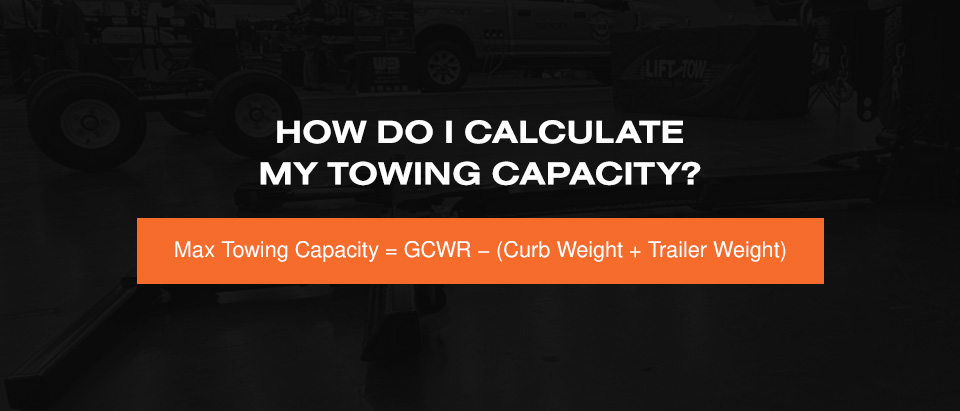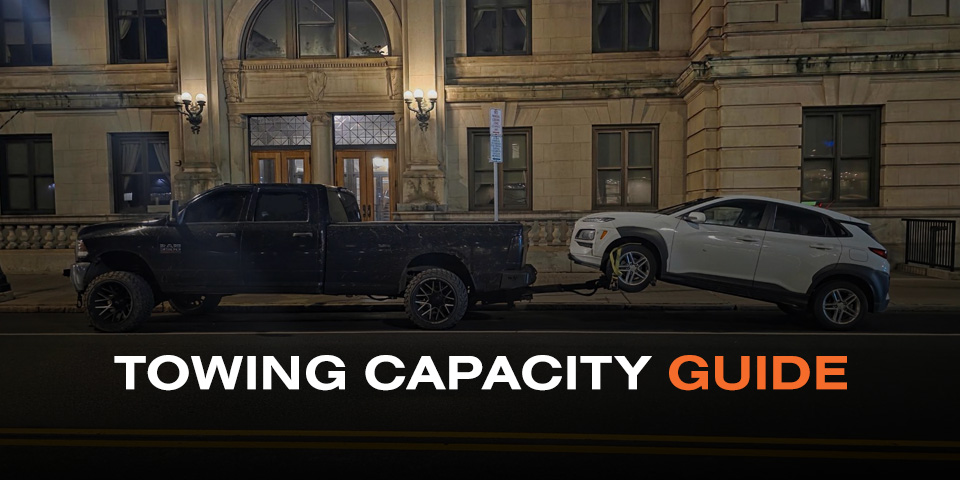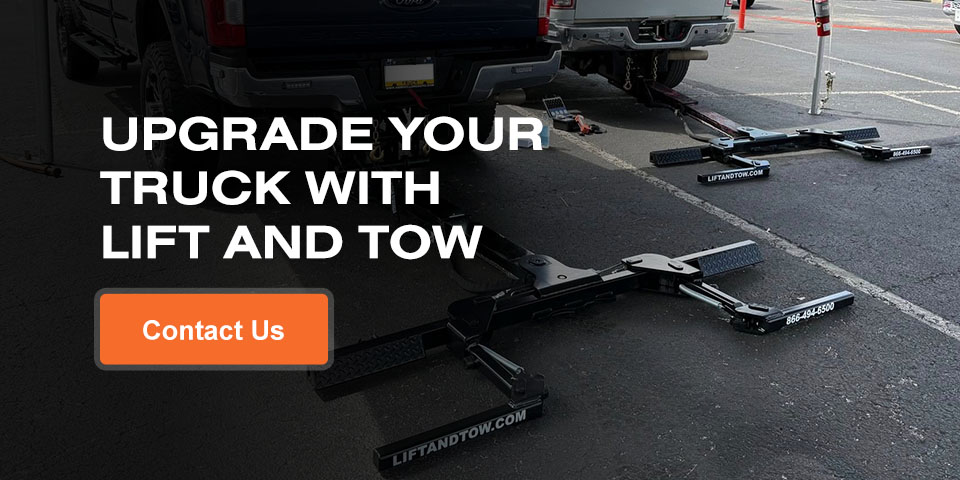Your vehicle’s towing capacity is the maximum weight it can tow without damaging its frame, transmission, brakes and other mechanisms. For truck owners, understanding tow capacity can help you avoid expensive repairs, risks and fines.
Calculating your vehicle’s towing capacity is not a simple matter, however. There are a whole host of factors that contribute to your vehicle’s overall capacity, and a strong understanding of them will lead to a richer, deeper understanding of your vehicle and what it can handle.
Here, we examine each of these factors and basic towing capacity guidelines so you can feel confident and safe on your next — or first — job.
Towing Terms and Definitions
A thorough knowledge of your truck’s towing capacity begins with an understanding of basic towing terminology. Without knowing the difference between braked vs. unbraked towing and standard towing vs. max towing, you won’t be able to make accurate decisions about the loads your truck can handle or how much towing capacity you need. Some of the most important terms to understand are:
- Gross vehicle weight rating (GVWR): This rating indicates how much downward force your vehicle can withstand. Passengers, equipment and anything in the truck’s bed weighs it down, and if that weight surpasses the GVWR, your truck is susceptible to damage. You may even be pulled over by police for exceeding the GVWR, so be sure to check for this rating in your owner’s manual or on your Safety Compliance Certification Label.
- Gross trailer weight (GTW): GTW refers to the total weight of the load being towed. If the GTW exceeds your vehicle’s towing capacity, you should not attempt to tow it, as doing so could result in vehicle damage and accidents.
- Curb weight: This number refers to your vehicle’s weight, but it also includes the weight of gas, oil and other fluids when they are filled to the brim.
- Dry weight: This number refers to the vehicle’s weight in isolation. It does not take gas and other consumables into consideration.
- Gross axle weight rating (GAWR): GAWR refers to the amount of weight a single axle can support, which often factors into towing calculations. Understanding GAWR is especially important for larger vehicles with several axles.
- Gross combined weight rating (GVWR): This rating combines GVWR with the maximum weight of the load being towed, including the maximum weight the load can carry. If the weight of the truck and trailer exceeds this rating, you may not be able to operate it legally, depending on your region and licensure.
- Tongue weight: When a load is being towed, it exerts pressure on the trailer hitch. Tongue weight is a measurement of this pressure.
- Trailer hitch class: There are five main trailer hitch classes, and each one is rated for different loads and tongue weights.
- Braked towing capacity: Some trailers have brakes of their own, and these brakes increase your vehicle’s towing capacity by giving it more control over the load it’s towing. Your vehicle’s braked towing capacity can typically be found in the owner’s manual.
- Unbraked towing capacity: Naturally, this refers to the weight your vehicle can tow when the load it’s hauling has no brake system. Unbraked towing capacity is almost always lower than braked towing capacity.
- Standard towing capacity: Your vehicle’s standard towing capacity refers to the weight it can tow on a daily basis. While it may be capable of carrying heavier loads, doing so on a regular basis will likely result in excess strain or even damage. Staying within your vehicle’s standard towing capacity most of the time is best.
- Max towing capacity: In some cases, you may need to move a load heavier than your vehicle’s standard towing capacity. Before you do, however, you need to evaluate your max towing capacity. If the weight of the load surpasses this number, do not attempt to tow it. Your vehicle’s transmission, frame, brakes and more may sustain serious damage if you do.
Lift & Tow’s Wheel Lifts
Truck drivers seriously invested in towing often choose to invest in wheel lift systems, which can be attached to the truck and hidden when not in use. Lift and Tow offers three variations of these lifts — the Super Series, the Z Series and the 5 Series.
What makes them distinct is the level of control each one offers. The Super Series wheel lift is fully automated and capable of adjusting up and down, left and right, and in and out as necessary.
The Z Series wheel lift offers remote control functionality from the driver’s seat, whereas the 5 Series tow boom offers four-function hydraulic power that goes up and down and in and out.
Frequently Asked Questions About Towing Capacity
Towing naturally comes with a host of questions. In this section, we’ll address some of the most common ones.

How Do I Calculate My Towing Capacity?
Max towing capacity can be calculated with a relatively simple formula — subtract your vehicle’s curb weight and the gross trailer weight from your vehicle’s gross combined weight rating.
Is There a Difference Between Towing On Pavement and Towing Off-Road?
Yes. Towing off-road is more difficult due to potentially steep, uneven or muddy terrain. These factors can limit your vehicle’s strength by forcing it into awkward positions where it can’t leverage its full strength.
What Percentage of Towing Capacity Is Safe?
Most tow truck drivers adhere to the 80% rule, only hauling loads that are at or below 80% of their maximum towing capacity. This is generally considered safe and gives drivers a margin of error in case of miscalculation.
How Can I Increase My Towing Capacity?
There are a number of ways to increase your vehicle’s towing capacity. These include:
- Using a higher class of hitch.
- Investing in fresh, more durable axles.
- Installing a transmission tuner so you can alter your horsepower or torque as necessary.
Does Towing Capacity Include Vehicle Weight?
No, towing capacity does not take your vehicle’s weight into account. In fact, calculating towing capacity involves subtracting your vehicle’s curb weight from its gross combined weight rating.
What Else Should I know Before Buying A Pickup for Towing?
Check out our guide on what to consider!
Upgrade Your Truck With Lift and Tow
Since 1999, Lift and Tow has offered a range of tow lifts to truck drivers just like you. Each one is powerful and sleek, capable of towing 8,000 pounds and being stored out of sight beneath your vehicle. Our tow lifts are compatible with trucks that weigh ¾ tons or more, and they can be shipped and installed anywhere in the United States. For our friends near Orrstown, PA, we offer installation services as well.
To learn more about our tow lifts, reach out online or give us a call at 717-496-0839.
Linked Sources:

